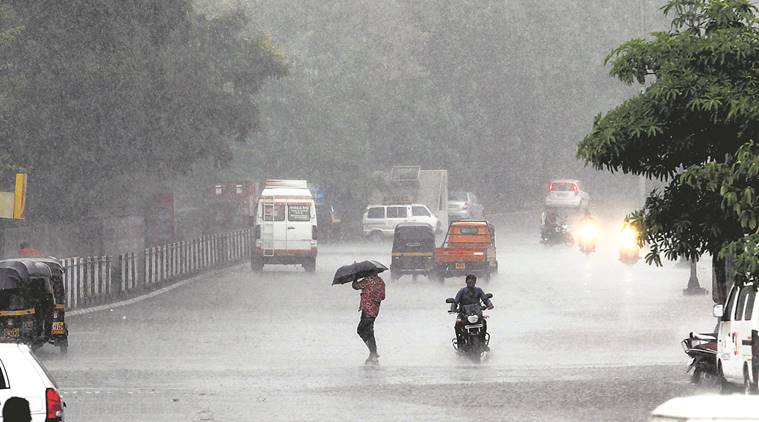IMD helps farmers, tourists and health departments; Pune becomes warmer over years
The Pune office of IMD set up a Climate Data Centre in 2004, and since then, gridded data on daily rainfall and temperature is being collated. “The IMD’s data is at par with global standards and is highly sought after by international meteorologists,” said A K Srivastava.
 The IMD has also started issuing warnings on heatwaves, cold waves and extreme weather events.
The IMD has also started issuing warnings on heatwaves, cold waves and extreme weather events.
Weather models improve accuracy
In 2003, three Doppler weather radars were inducted by the India Meteorological Department (IMD). Later, to ensure better forecasts, the US government’s National Oceanic and Atmospheric Administration weather model was tweaked to suit India’s requirements. “Today, there is a nationwide network. Two decades ago, weather forecasts were valid for only two days. Today, forecasts for up to five days are issued. This would not have been possible without data attained from improved weather models and the powerful computer systems which run them,” recalled R R Kelkar, who served as the IMD chief from 1998 to 2003.
International-standard weather data
The Pune office of IMD set up a Climate Data Centre in 2004, and since then, gridded data on daily rainfall and temperature is being collated. “The IMD’s data is at par with global standards and is highly sought after by international meteorologists,” said A K Srivastava, head of the climate monitoring and analysis group, IMD. In recent years, India has also been instrumental in setting up and co-ordinating the South Asian Seasonal Climate Outlook Forum (SASCOF), co-sponsored by the World Meteorological Organisation.
“Information gathered at the SASCOF meetings are useful in various fields, such as crop production, hydroelectric power generation and meeting drinking water requirements, all of which are dependent on rainfall… ,” said D S Pai, head of the climate prediction and climate research division, IMD.
Application-based weather services
The IMD has, in recent years, added more ‘domain-specific’ forecasts to its list. Other than agriculture, the list now includes forecasts for those travelling via national highways, and those travelling to pilgrimages such as Amarnath, Kailash Mansarovar, Char Dham and Vaishno Devi.
The IMD has also started issuing warnings on heatwaves, cold waves and extreme weather events. “The IMD has tied up with health departments of various states… one of the steps… was issuing data on the heat index and its possible fallout,” said B Mukhopadhyay, additional director general of Meteorology Research.
Reaching out to farmers: From 500 to 2 crore
With mobile phones becoming an essential device, the IMD has teamed up with the Agromet Field Units (AMFU) in order to ideate and connect to farmers via SMS. Three years ago, only 500 farmers received agriculture-related advisories. “Today, we have managed to reach 2 crore farmers’ families. These advisories sent by AMFU not only have updates about daily weather… they also share information about preparing the land and storing the crop,” said N Chattopadhyay, deputy director of Agriculture Meteorology, IMD. A major challenge for the project is to deal with rapidly changing climate and its effects on cultivation, and tailoring advisories accordingly.
Long Range Forecast and Monsoon Mission
Phase I of the Monsoon Mission paved the way for including the coupled forecasting system (CFS), which was implemented at the Indian Institute of Tropical Meteorology (IITM). In April 2003, the IMD issued its first seasonal forecast for the monsoon — from June to September — for the country.
Issuing Long Range Forecast was also important for various sectors such as water resources, forestry, hydro-electricity etc. “We have significantly improved the operational forecast system in the last 10 years,” said Pai.
Indigenous digital instruments
Almost all instruments used for measuring a range of weather parameters across over 500 observatories — such as wind speed, temperature, humidity etc — are digital. “All the previously used analog systems have been almost replaced with digital instruments, helping improve the accuracy of the readings,” explained R R Mali, head of instrumentation division, IMD.
“We now develop and manufacture transmissiometers, which were earlier imported from Germany. Today, there is a network of over 26 airports where the latest instruments are installed,” noted Mali.
Shrinking manpower in the Internet era
As technology made rapid strides, the manpower at IMD shrunk. The last major recruitment for many of its divisions was in 1996, over two decades ago. Earlier, various departments employed draftsmen, who specialised in mapping and plotting. Today, their job is done by a software coded specifically for the task. A few years ago, data from weather observatories would be shared using telegram messages, for which coders and decoders were needed. Telegrams are now extinct and IMD has moved on to using the latest technology, both for data assimilation and dissemination.
Summers get hotter
With global temperatures rising every year, Indian cities are increasingly coming under the grip of the Urban Heat Island Effect, thanks to burgeoning constructions. Summers have become warmer in recent decades, with Pune’s maximum temperature rising by 0.5 -1 degrees Celsius in April and May, according to an analysis by scientists at the IITM.
On the other hand, summer nights were found to be getting marginally cooler, with the minimum temperature falling by approximately 0.5 degrees Celsius during the two months.







